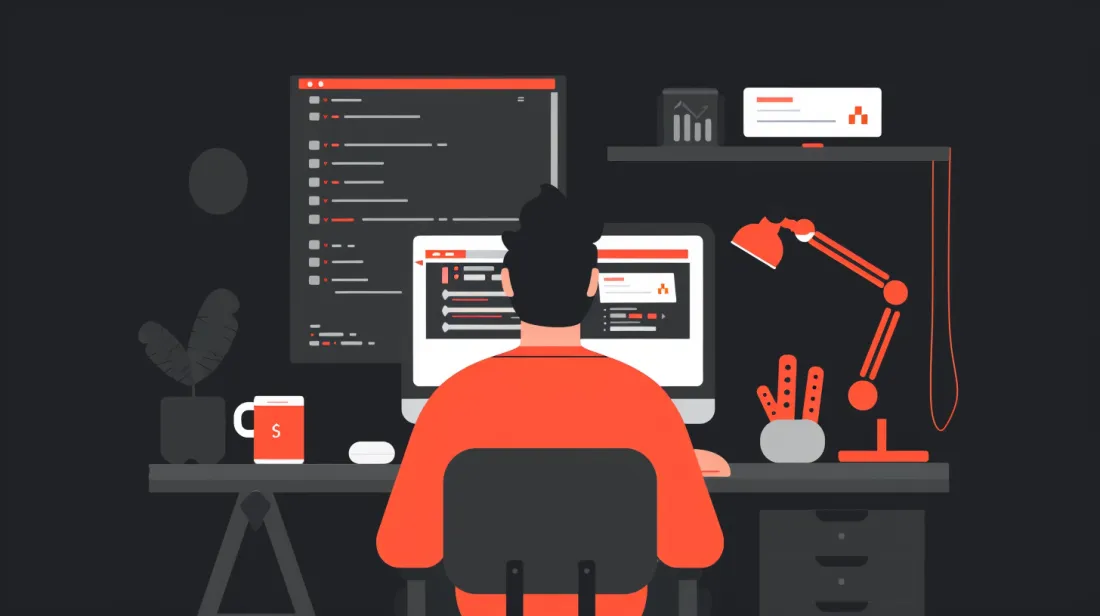Creating a Minimum Viable Product (MVP) is a delicate process. Kapsys has launched more than 30 MVPs in various territories and industries since its inception in 2006. With the uniqueness of each of them in mind, we have come across similarities in regards to the mistakes made along the way. It's always best to start with the basics, as these will help you create something better than nothing at all. Here are six mistakes you should avoid.
1. Moving Slowly
Starting slowly is one of the biggest mistakes you can make when creating a Minimum Viable Product (MVP). Remember, the whole point is to get something out there as quickly as possible so you can start getting feedback using custom software development. If you spend too much time on the small details, you'll never actually get anything done. It's essential not to take too long to build your Minimum Viable Product (MVP). If you take too much time, people will lose interest, and the product may go nowhere even though it might have potential. The point of a Minimum Viable Product (MVP) is that it gives you something that offers value enough for people to want more. It would be best to never spend too much time on something that isn't going anywhere. Anything that moves too slowly is likely to be broken down and seen as useless in software development. People want to get things done, not sit around waiting for them to happen. Even if your plans are an intricate web of unique features, it's best not to get carried away with all the bells and whistles you can add in the beginning. Move fast and get your Minimum Viable Product (MVP) out there.
2. Not Focusing on a Specific Audience
One of the biggest mistakes entrepreneurs make when starting is not having a specific audience in mind. This is a mistake because it's impossible to please everyone, and you'll wind up with a product that doesn't serve anyone well. It's better to focus on a specific audience and make something that appeals to them specifically. Make sure there is a clear and defined target market for your product. This way, you can make something that appeals to these people and gives them what they want from the start. You'll wind up with a product that's much better received by the people who care about it. You can continually expand your reach later on, but starting small is always a good idea. You need to identify your target market before starting; otherwise, everything will feel like guesswork. This will help you improve upon certain areas that you know they will want more of, instead of wasting time trying to put in features that your target market won't use. A specific target audience also helps you validate your product early on. If people from this target market are interested in what you're doing, it's a good sign that you're on the right track.
3. Not Having a Right Team in Place
Many people mistake underestimating how important having a good team is. If you don't have the right people in place, it will be challenging to get anything done. It's also essential to have the skillset needed to get things off the ground. This means getting people on board who are passionate about the project and ensuring they have the skillset to make it happen. Building such a Viable Product is hard work, and it's even more complicated if you don't have the right team in place. You need people who can help you get the job done quickly and efficiently to focus on other business areas. If you try to do everything yourself, you'll soon become overwhelmed and bogged down. It's best to focus on what you do best and let your team handle the rest. If you're not an expert at everything, don't try to act like one. Instead, find people who can work alongside you so that everyone is working towards a common goal.
4. Focusing on the "Minimum" Rather Than "Viable"
Many people mistake a Minimum Viable Product for their "minimum" product, which would be the very first thing that they launch. This is a mistake because it can quickly turn into something no one wants to use if you're not careful. The point of building an Minimum Viable Product (MVP)s to start small and work your way up from there, not make something that is barely usable. It's important not to confuse a Minimum Viable Product with your "minimum" product, as they are two completely different things. If you focus on the bare minimum, it's unlikely that anyone will want it or need it. You have to put in enough features so that people can see value in getting started, but not so many that it's overwhelming. It's easy to get caught up in how many features you can cram into your Minimum Viable Product (MVP), but that's not necessarily a good idea. People don't just want something that is the minimum. They want something viable and worth their time and money. Maybe you can put out a product. However, it will only offer limited value and won't be something people will want to use. To have a good viable product, you need to focus less on the minimum and more on what's viable in lean software development. It would be best to spend enough time perfecting your product to feel complete and offer real value to users. If people see that it isn't finished or lacks in some areas, they will quickly lose interest and abandon the product.
5. Not Listening to Customers
Listening to customers is essential because it helps you learn what they want and need and where you can improve your product. It's also helpful because it gives you insight into other areas that you didn't even think about. You might take this information and use it for future products so that the first one isn't a complete flop. It would be best to always listen to customer feedback because you can learn a lot from it. People will offer constructive criticism that will help you improve upon your product, and if you need to update things, they will help guide you in the right direction. Even if someone isn't offering constructive feedback or pointing out flaws, talking things over will help you see improved things. You won't do well if you try to ignore your customers and listen to their concerns. They will quickly lose interest in the product because they feel like no one is listening. For the viable product to work, people must believe that it's something they want and need, which is only possible if heard.
6. Focusing on Too Many Product Features
When designing your Minimum Viable Product, you have to focus on a few key features that will make or break the product. If you try to do too much, it's going to fail because there is no way that you can include all of these features in a limited release. You need to pick one or two core features and add on a few secondary ones. This will help you ensure that people want to use your product and are not half-baked. It also makes it easier to develop because you do not include everything at once. You can always add more features in future releases, but you need to get the core ones right for now. If you want to get feedback on future features, you can include them in your development process but not add them to the Minimum Viable Product (MVP). If you try to do everything at once, it will result in a bloated product that people won't find helpful or interesting. Adding too many product features can be a big mistake because it can easily overwhelm and cause confusion. You want people to see the value in your product, which isn't easy to do if too many things are going on. When someone is trying to decide whether or not to use your product, they will quickly become overwhelmed if you offer too many features. It's essential to have a product that offers just enough because you don't want people to be overwhelmed or confused by the bells and whistles. It would be best if you worked with your team to hone in on making one or two things great instead of doing everything at once. People won't see the value in buying something too complicated.
Bottom line
When you build your Minimum Viable Product, six major mistakes can cause the product to fail. The good news is that these errors are often avoidable, and with Kapsys’ help, they will never happen again. At Kapsys, we work for our clients on a consultative basis. No matter what size your company or project is, we have an expert ready to answer all of your questions about Minimum Viable Product (MVP), web design & development, e-commerce solutions, mobile app development, and more. Let us know if any of these common errors sound familiar to you so together we can create the perfect Minimum Viable Product (MVP) strategy for success.



